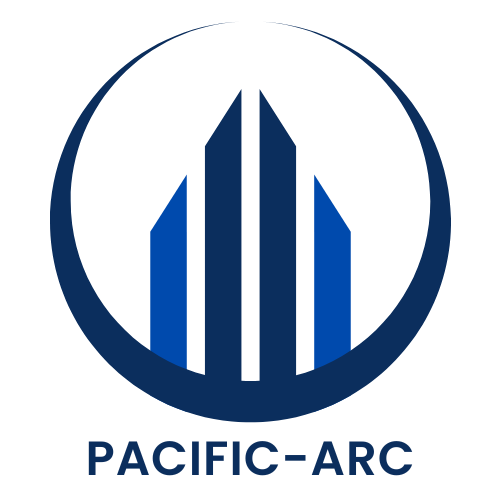Buying a home can feel like trying to solve a Rubik’s Cube blindfolded. Just when you think you’ve got it figured out, another twist throws you off. Enter the 3% down payment loan option—a game changer that makes homeownership a lot less daunting. Imagine trading in your piggy bank for a golden ticket that opens the door to your dream home without breaking the bank.
With just a fraction of the traditional down payment, this option lets aspiring homeowners dive into the market without drowning in debt. It’s like finding a cheat code in a video game—suddenly, the impossible becomes possible. So let’s unpack this 3% wonder and see how it can turn your homeownership dreams into reality, one small step at a time.
Table of Contents
ToggleOverview of the 3% Down Payment Loan Option
The 3% down payment loan option offers a practical pathway for homebuyers. This program aims to assist those who may struggle with larger down payments. Many individuals see it as an opportunity to enter the housing market sooner.
Creditworthy borrowers can benefit from reduced upfront costs. A 3% down payment means a buyer with a $300,000 home only needs to provide $9,000 upfront. Compared to standard down payment requirements, this option showcases notable affordability.
Several programs exist that support this lower down payment. Fannie Mae and Freddie Mac are among the most recognized initiatives. Both organizations encourage homeownership with flexible terms tailored for first-time buyers.
Potential buyers should recognize the associated costs. Mortgage insurance often accompanies low down payment options. Understanding these additional financial responsibilities ensures more informed decision-making.
This loan option remains particularly appealing in high-cost housing markets. Those living in these areas find it significantly less daunting than traditional down payment expectations. Consequently, the 3% down payment loan option enhances accessibility to homeownership.
Deciding on this loan involves several important considerations. It requires examining long-term financial goals and personal budgets. Evaluating these factors can lead to confident and compelling homebuying choices.
Benefits of a 3% Down Payment Loan

The 3% down payment loan option provides several advantages for prospective homebuyers. These benefits enhance the overall accessibility of homeownership.
Lower Initial Costs
Lower initial costs represent a significant advantage of the 3% down payment loan option. Buyers only need $9,000 for a $300,000 home, contrasting sharply with traditional requirements, which often demand 20% or more. This decrease in upfront cost makes home purchases more attainable for many individuals. Financial flexibility becomes possible, allowing buyers to allocate funds for expenses like moving costs, renovations, or emergency savings. Less stress accompanies the purchase process when lower cash requirements are involved. Buyers appreciate the freedom to enter the market with a smaller financial commitment.
Access to Homeownership
Access to homeownership expands significantly with a 3% down payment loan. First-time buyers often encounter barriers due to high home prices and steep down payments. This loan option breaks through those barriers, helping individuals realize the dream of owning a home. Many supportive programs from Fannie Mae and Freddie Mac enhance this opportunity, ensuring flexible terms tailored for buyers. Individuals anxious about entering the housing market find encouragement in these options. The reduced financial burden fosters increased participation in homeownership, leading to healthier communities. Overall, the 3% down payment loan serves as a key facilitator in making homeownership achievable for a broader audience.
Eligibility Criteria for Borrowers
The 3% down payment loan option has specific eligibility criteria. Understanding these requirements helps potential buyers determine their fit for this financing opportunity.
Credit Score Requirements
Credit scores play a crucial role in securing a 3% down payment loan. Typically, lenders prefer scores of at least 620, though some programs may accommodate lower scores with additional conditions. A strong credit history suggests reliability. It can lead to lower interest rates and better loan terms. Borrowers should focus on improving their credit score prior to application. This can include paying down debts, making timely payments, and correcting any inaccuracies on credit reports. Higher scores often result in increased borrowing power, making homeownership more attainable.
Income Considerations
Income stability is another vital factor for borrowers. Lenders assess both the borrower’s gross monthly income and debt-to-income ratio. Generally, a debt-to-income ratio of 43% or lower is favorable. Higher ratios may limit borrowing potential. Income sources can vary, including wages, bonuses, and commissions. Documentation of consistent income helps demonstrate financial reliability. First-time homebuyers often qualify for programs tailored to lower-income levels, enhancing access to this funding option. Overall, demonstrating adequate and stable income creates a strong application for the 3% down payment loan.
Types of Loans Available
Various loan options exist for those considering the 3% down payment loan. Understanding these choices helps potential homebuyers align their financial strategies with their housing goals.
Conventional Loans
Conventional loans typically require higher down payments than 3%. However, some lenders offer conventional loans with a 3% down payment targeted at first-time buyers. These loans often feature fixed interest rates, providing stable monthly payments. Additionally, lenders assess credit history and financial stability, favoring applicants with a score of at least 620. Buyers with stronger credit can secure better terms and lower rates. Overall, these loans offer flexibility for those who qualify.
Government-Backed Loans
Government-backed loans present another significant option. Programs from Fannie Mae and Freddie Mac specifically support the 3% down payment initiative. These loans are designed for low- to moderate-income buyers seeking homeownership. Alongside lower down payments, government-backed loans often include favorable terms, such as reduced mortgage insurance requirements. Borrowers benefit from these loans through increased access to affordable housing. As a result, first-time homebuyers find these options particularly appealing, allowing them entry into the market with less financial strain.
Potential Drawbacks
While the 3% down payment loan option offers distinct advantages, certain drawbacks exist that potential buyers should consider.
Higher Monthly Payments
Monthly payments can increase significantly with a lower down payment. Lenders calculate these payments based on the loan amount, resulting in higher amounts for borrowers with smaller down payments. For instance, opting for a $300,000 home with only a 3% down payment could lead to monthly payments that include both principal and interest, which may strain a borrower’s budget. Refinancing later may help, but initial payment burdens might hinder financial flexibility in the short term. Buyers must evaluate their budgets carefully to ensure sustainable monthly payments remain manageable.
Private Mortgage Insurance (PMI)
Private mortgage insurance often accompanies low down payment options. PMI protects lenders by covering the risk associated with low equity loans, and borrowers pay this monthly premium in addition to their mortgage payment. The cost of PMI varies but typically ranges from 0.3% to 1.5% of the original loan amount annually. For a home with a 3% down payment, this additional expense may significantly raise monthly costs. Homebuyers should factor PMI into their overall housing costs to avoid budget surprises, and understanding how PMI works can help them make informed financial decisions.
The 3% down payment loan option represents a significant opportunity for aspiring homeowners. By lowering the initial financial barrier, it opens doors for many who might otherwise struggle to enter the housing market. This option not only eases the burden of large down payments but also allows buyers to allocate funds for other essential expenses.
While it offers many advantages, potential buyers should remain mindful of the associated costs such as private mortgage insurance. Understanding these factors ensures informed decision-making. Ultimately, the 3% down payment loan can be a valuable tool in achieving homeownership, provided it’s approached with careful planning and consideration of one’s financial situation.





